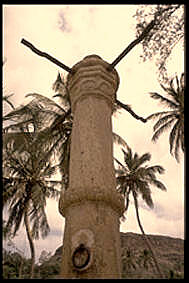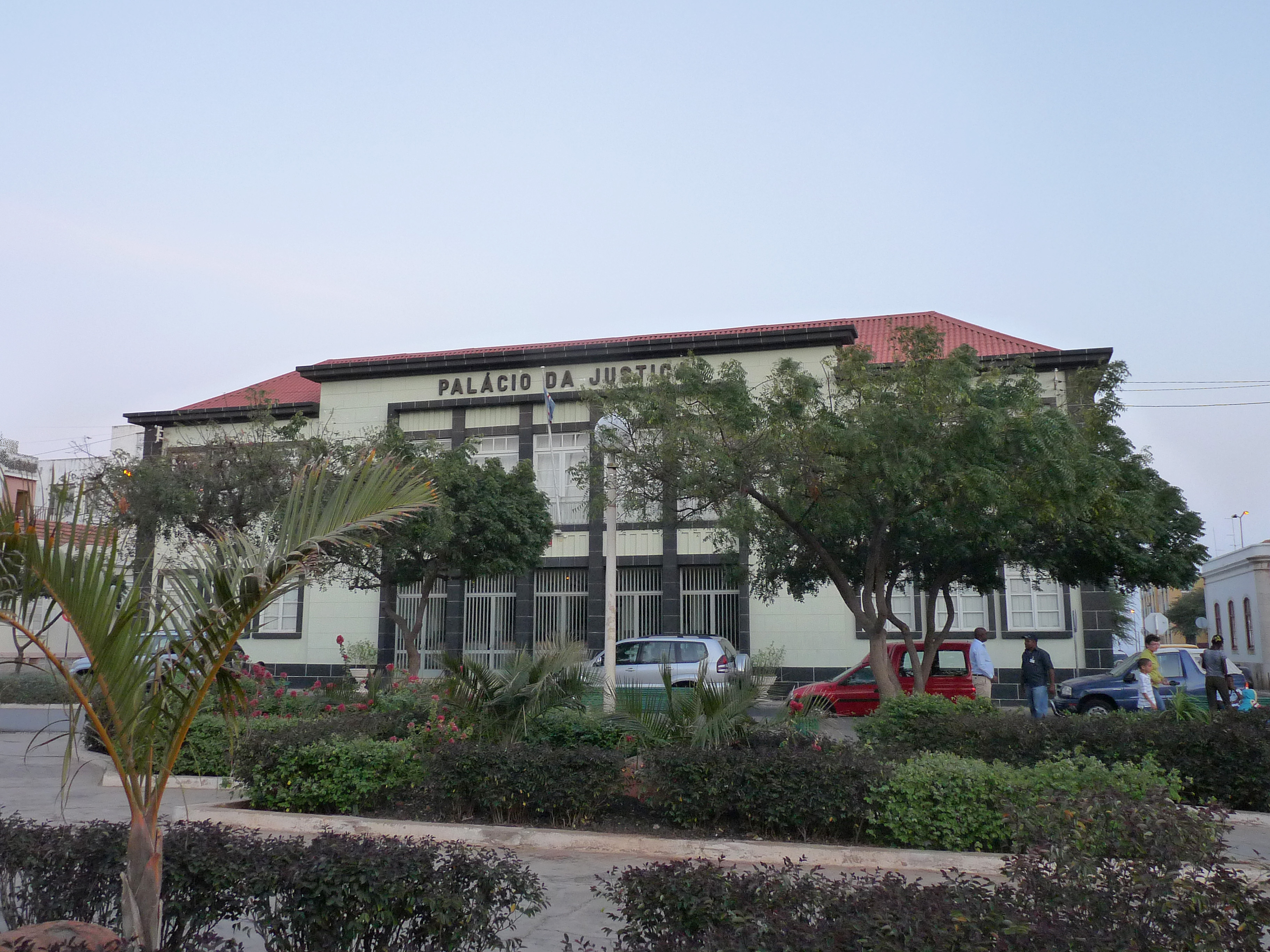|
Avenida Amílcar Cabral
Avenida Amílcar Cabral is an avenue in the Plateau, the historic centre of Praia, Santiago island, Cape Verde.Valor simbólico do centro histórico da Praia Lourenço Conceição Gomes, Universidade Portucalense, 2008, pp. 316, 330-350 It is the neighborhood's longest street and the main artery of the city centre. Formerly named ''Rua Sá da Bandeira'' after 19th-century Portuguese politician Sá da Bandeira, it was renamed after Cape Verdean independence in honour of , leader ... [...More Info...] [...Related Items...] OR: [Wikipedia] [Google] [Baidu] |
Praia
Praia (, Portuguese for "beach") is the capital and largest city of Cape Verde.Cape Verde, Statistical Yearbook 2015 Instituto Nacional de Estatística Located on the southern coast of Santiago island within the group, the city is the seat of the ... [...More Info...] [...Related Items...] OR: [Wikipedia] [Google] [Baidu] |
Santiago, Cape Verde
Santiago (Portuguese language, Portuguese for “James, son of Zebedee, Saint James”) is the largest island of Cape Verde, its most important agricultural centre and home to half the nation's population. Part of the Sotavento Islands, it lies between the islands of Maio, Cape Verde, Maio ( to the east) and Fogo, Cape Verde, Fogo ( to the west). It was the first of the islands to be settled: the town of Ribeira Grande (now Cidade Velha and a UNESCO World Heritage Site) was founded in 1462. Santiago is home to the nation's capital city of Praia. History The eastern side of the nearby island of Fogo, Cape Verde, Fogo collapsed into the ocean 73,000 years ago, creating a tsunami high which struck Santiago. In 1460, António de Noli became the first to visit the island. Da Noli settled at ''Ribeira Grande'' (now Cidade Velha) with his family members and Portuguese from Algarve and Alentejo in 1462. [...More Info...] [...Related Items...] OR: [Wikipedia] [Google] [Baidu] |
Amílcar Cabral
Amílcar Lopes Cabral (; – ) was a Bissau-Guinean and Cape Verdean agricultural engineer, political organizer, and diplomat. He was one of Africa's foremost anti-colonial leaders. He was also a pan-Africanist and intellectual nationalist revolutionary poet. Also known by the ''nom de guerre'' Abel Djassi, he led the nationalist movement of Guinea-Bissau and the Cape Verde Islands and the ensuing war of independence in Guinea-Bissau. Cabral was shot dead on 20 January 1973, about eight months before Guinea-Bissau's unilateral declaration of independence. He was deeply influenced by Marxism, becoming an inspiration to revolutionary socialists and national independence movements worldwide. Early life and education Amílcar Lopes Cabral was born on 12 September 1924. He was born in the town of Bafatá, Portuguese Guinea (located in modern-day Guinea-Bissau) to Cape Verdean parents, Juvenal António Lopes da Costa Cabral and Iva Pinhel Évora, both hailing from Santiago. ... [...More Info...] [...Related Items...] OR: [Wikipedia] [Google] [Baidu] |
Plateau (Praia)
''Plateau'' is the historic centre of the capital city of Praia on the island of Santiago, Cape Verde, Santiago, Cape Verde. It gets its name (from French language, French “plateau”) because it is situated on a plateau overlooking the port of Praia. Its average elevation is 37 meters above sea level. The population of ''Plateau'' was 1,019 at the 2010 census. Many public buildings are situated in ''Plateau'', notably the Presidential Palace of Cape Verde, Presidential Palace, the Pro-Cathedral of Our Lady of Grace, Praia, cathedral, the city hall and the Museu Etnográfico da Praia, Ethnographic Museum. Adjacent neighbourhoods are Gamboa, Praia, Gamboa/Chã de Areia to the south, Várzea, Praia, Várzea to the southwest and west, Achadinha (Praia), Achadinha to the northwest, Fazenda, Praia, Fazenda to the north and Praia Negra to the east. History Praia was founded as a small village near the natural Praia Harbor, harbour in the early 16th century. Due to its strategic po ... [...More Info...] [...Related Items...] OR: [Wikipedia] [Google] [Baidu] |
Cape Verde
Cape Verde or Cabo Verde, officially the Republic of Cabo Verde, is an island country and archipelagic state of West Africa in the central Atlantic Ocean, consisting of ten volcanic islands with a combined land area of about . These islands lie between west of Cap-Vert, the westernmost point of continental Africa. The List of islands of Cape Verde, Cape Verde islands form part of the Macaronesia ecoregion, along with the Azores, the Canary Islands, Madeira and the Savage Isles. The Cape Verde archipelago was uninhabited until the 15th century, when Portuguese Empire, Portuguese explorers colonized the islands, establishing one of the first Age of Discovery, European settlements in the tropics. Due to its strategic position, Cape Verde became a significant location in the Atlantic slave trade, transatlantic slave trade during the 16th and 17th centuries. The islands experienced economic growth during this period, driven by their role by the rapid emergence of merchants, priva ... [...More Info...] [...Related Items...] OR: [Wikipedia] [Google] [Baidu] |
Bernardo De Sá Nogueira De Figueiredo, 1st Marquis Of Sá Da Bandeira
Bernardo is a given name, possibly derived from the Germanic Bernhard. It may refer to: People * Bernardo the Japanese (died 1557), early Japanese Christian convert and disciple of Saint Francis Xavier * Bernardo Accolti (1465–1536), Italian poet * Bernardo Bellotto (c. 1721/2-1780), Venetian urban landscape painter and printmaker in etching * Bernardo Bernardo (1941–2018), Filipino veteran stage actor, comedian, and film director * Bernardo Bertolucci (1941–2018), Italian film director and screenwriter * Bernardo Buontalenti (1608), Italian stage designer, architect, theatrical designer, military engineer and artist * Bernardo Clesio (1484–1539), Italian cardinal, bishop, prince, diplomat, humanist and botanist * Bernardo Corradi (born 1976), Italian footballer * Bernardo Daddi (1348), Italian Renaissance painter * Bernardo Domínguez (born 1979), Spanish footballer known as Bernardo * Bernardo Dovizi (1470–1520), Italian cardinal and comedy writer * Bernardo Espin ... [...More Info...] [...Related Items...] OR: [Wikipedia] [Google] [Baidu] |
Guinea-Bissau
Guinea-Bissau, officially the Republic of Guinea-Bissau, is a country in West Africa that covers with an estimated population of 2,026,778. It borders Senegal to Guinea-Bissau–Senegal border, its north and Guinea to Guinea–Guinea-Bissau border, its southeast. Guinea-Bissau was once part of the kingdom of Kaabu, as well as part of the Mali Empire. Parts of this kingdom persisted until the 18th century, while a few others had been under some rule by the Portuguese Empire since the 16th century. In the 19th century, it was colonised as Portuguese Guinea. Portuguese control was restricted and weak until the early 20th century, when its pacification campaigns solidified Portuguese sovereignty in the area. The final Portuguese victory over the last remaining bastion of mainland resistance came in 1915, with the conquest of the Papel people, Papel-ruled Kingdom of Bissau by the Portuguese military officer João Teixeira Pinto, Teixeira Pinto and the Wolof people, Wolof mercenary ... [...More Info...] [...Related Items...] OR: [Wikipedia] [Google] [Baidu] |
Rua 5 De Julho
Rua 5 de Julho (also: ''Rua Pedonal'' "pedestrian street", formerly ''Rua D. Luís'') is a street in the Plateau, the historic centre of Praia, Santiago island, Cape Verde.Valor simbólico do centro histórico da Praia Lourenço Conceição Gomes, Universidade Portucalense, 2008, p. 316, 361-372 Formerly named ''Rua D. Luís'' after King , it was renamed after , the of Cape Verde (1975). It runs so ... [...More Info...] [...Related Items...] OR: [Wikipedia] [Google] [Baidu] |
Rua Serpa Pinto
''There is also Rua Serpa Pinto in the neighbourhood of Mártires in Lisbon, Portugal'' Rua Serpa Pinto (formerly ''Rua do Lencastre'') is a street in the Plateau, the historic centre of Praia, Santiago island, Cape Verde.Valor simbólico do centro histórico da Praia Lourenço Conceição Gomes, Universidade Portucalense, 2008, p. 316, 350-357, 439-448 It is one of the main arteries of the city centre. Formerly named ''Rua do Lencastre'' after early 19th-century Portuguese governor António Lencastre, it was renamed in honour of , Portuguese colonial ... [...More Info...] [...Related Items...] OR: [Wikipedia] [Google] [Baidu] |
Avenida Andrade Corvo
Avenida Andrade Corvo (formerly ''Rua do Corvo'') is an avenue in the Plateau (Praia), Plateau of Praia, in the city centre of Praia, Santiago, Cape Verde, Santiago island, Cape Verde.Valor simbólico do centro histórico da Praia Lourenço Conceição Gomes, Universidade Portucalense, 2008, p. 316, 321-330 It was named in honour of 19th-century Portuguese politician João de Andrade Corvo. It runs south to north in the eastern part of the Plateau, parallel to Rua Serpa Pinto. Its northern end is formed by Praça Luís de Camões. Notable buildings along the street: *Quartel Jaime Mota, military barracks built in 1872 *Presidential Palace of Cape Verde (rear) *Pro-Cathedral of Our Lady of Grace, Praia, Pro-Cathedral of Our Lady of Grace (rear) *Palace of Justice (rear) *townhouse Cor-de-rosa, built at t ... [...More Info...] [...Related Items...] OR: [Wikipedia] [Google] [Baidu] |
Praça Alexandre Albuquerque
Praça Alexandre Albuquerque is the main square of the capital city of Praia, Cape Verde. It is located in the southwestern part of the Plateau (Praia), Plateau, the historical city centre of Praia. Formerly known as ''Praça do Pelourinho'', it received its current name in 1876 in honour of the Portuguese colonial governor Caetano Alexandre de Almeida e Albuquerque.Inventário dos recursos turísticos do município da Praia Direcção Geral do Turismo, p. 24-28Valor simbólico do centro histórico da Praia Lourenço Conceição Gomes, ... [...More Info...] [...Related Items...] OR: [Wikipedia] [Google] [Baidu] |
Ildo Lobo
Ildo Lobo (November 25, 1953 – October 20, 2004) was a Cape Verdean singer. His versatile and melodic voice, commanding stage presence and trademark berets made him one of the most recognizable performers in Cape Verde."Ildo Lobo, Cape Verde's Greatest Male Singer Passed Away" at ''World Music Central'' Always well known throughout the Cape Verde Islands, Lobo rose to international fame with his first solo work, "''Nôs Morna''", following it with another album "''Intellectual''". Biography Lobo was born on the island of Sal in the town of Pedra de Lume ...[...More Info...] [...Related Items...] OR: [Wikipedia] [Google] [Baidu] |




